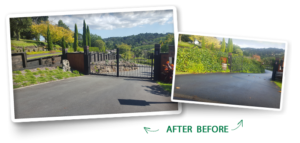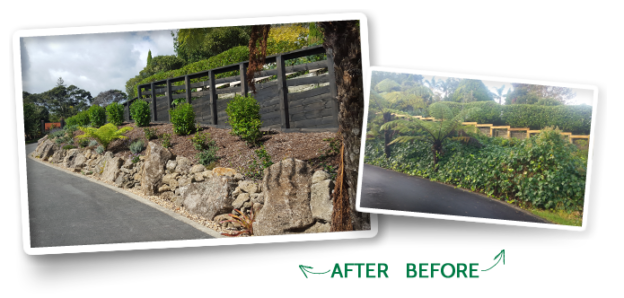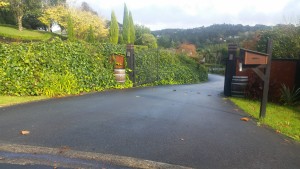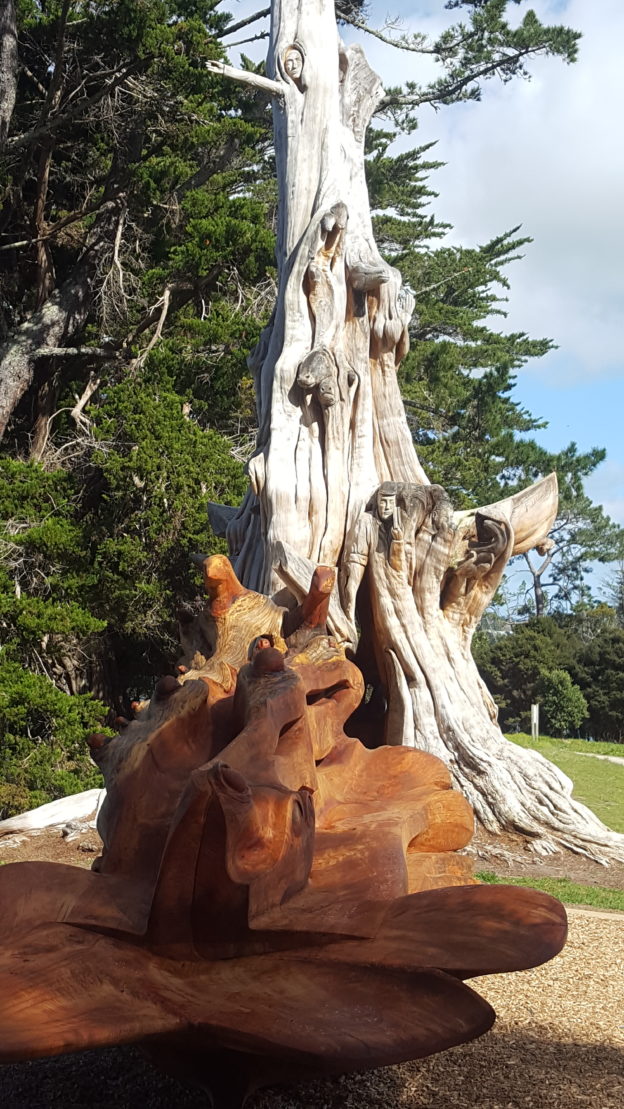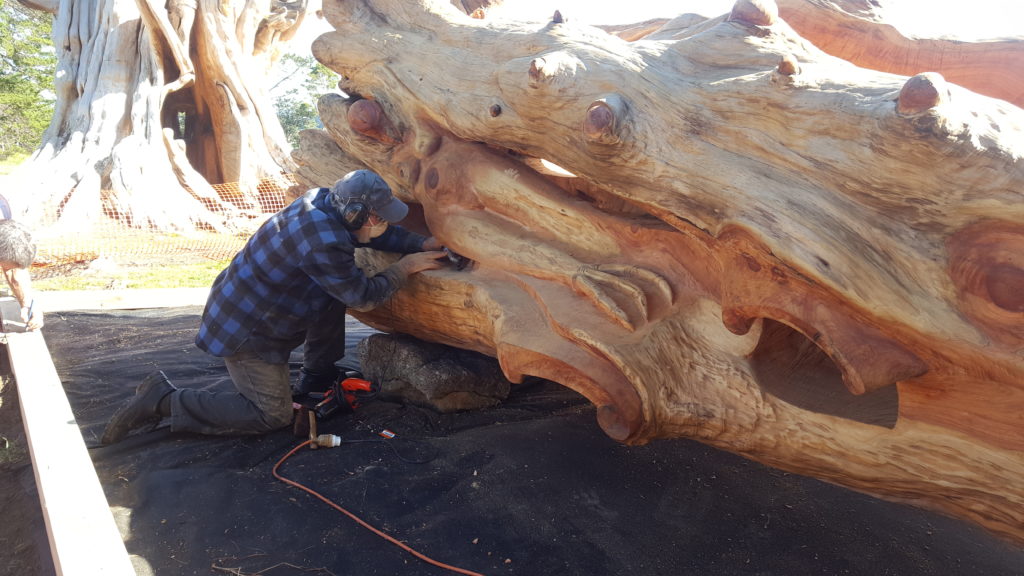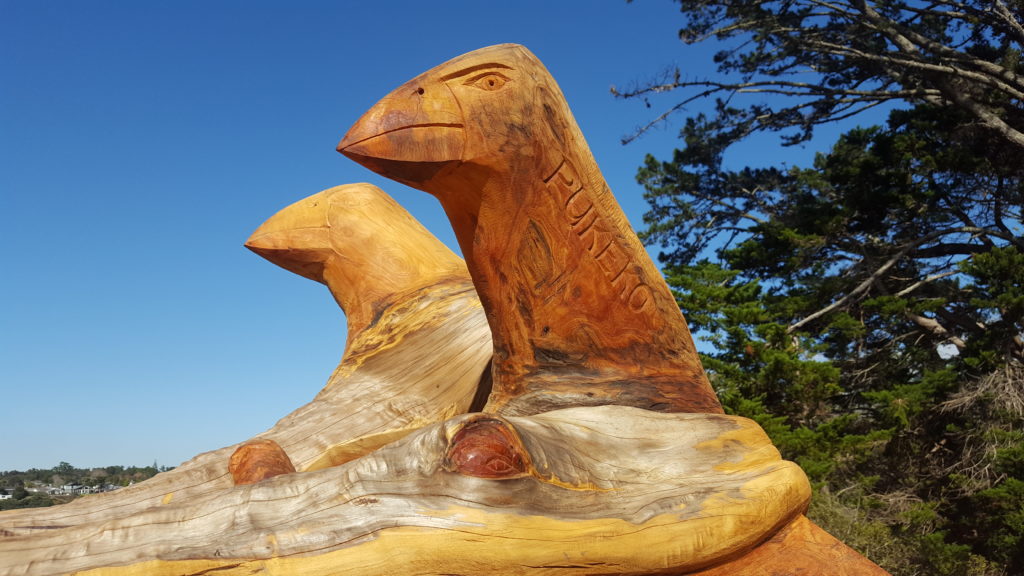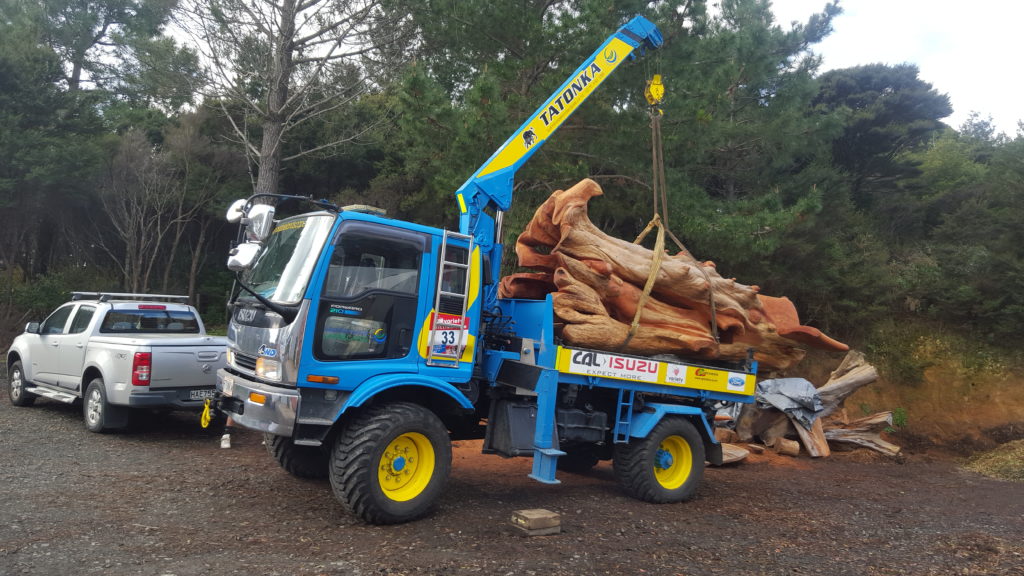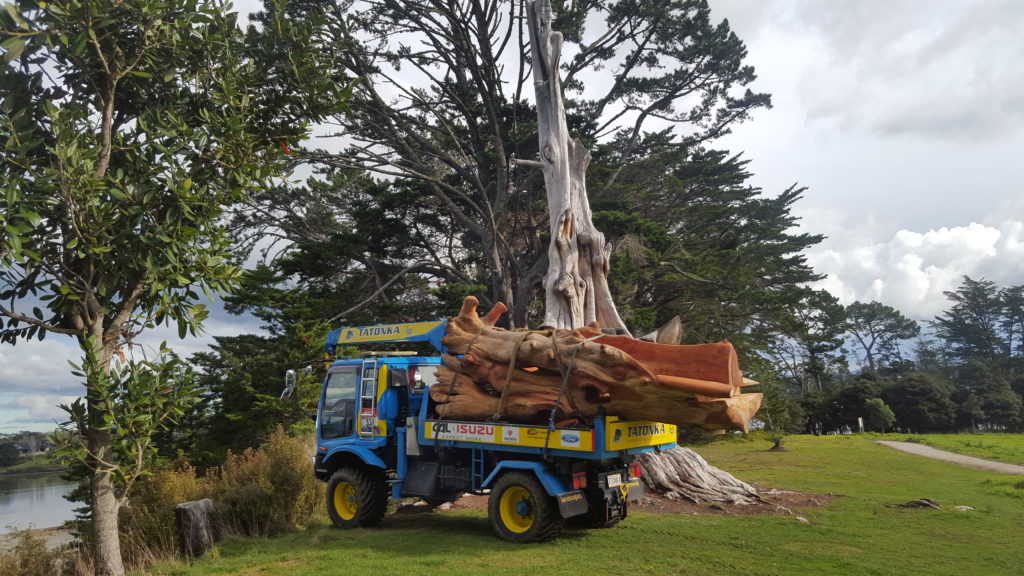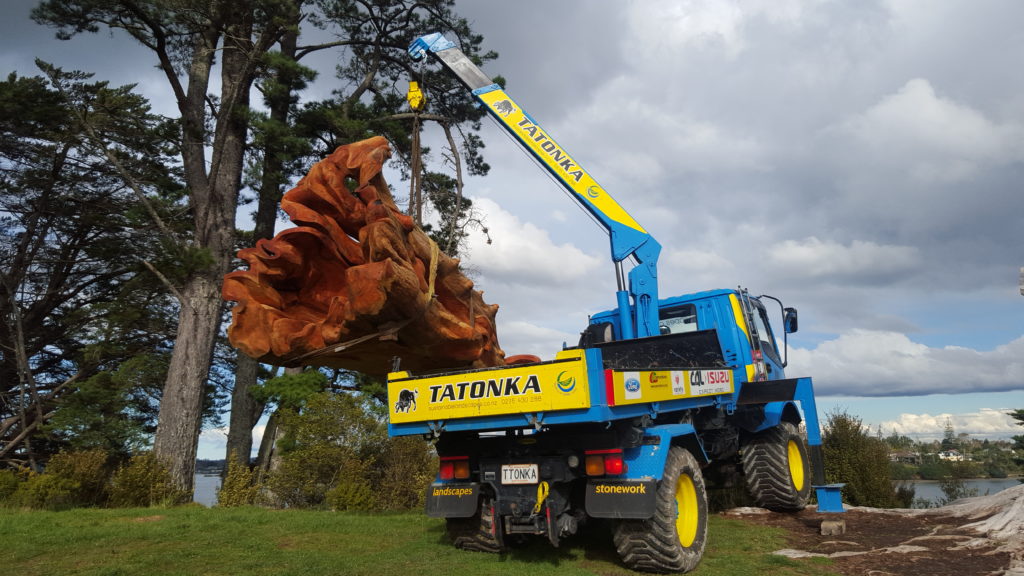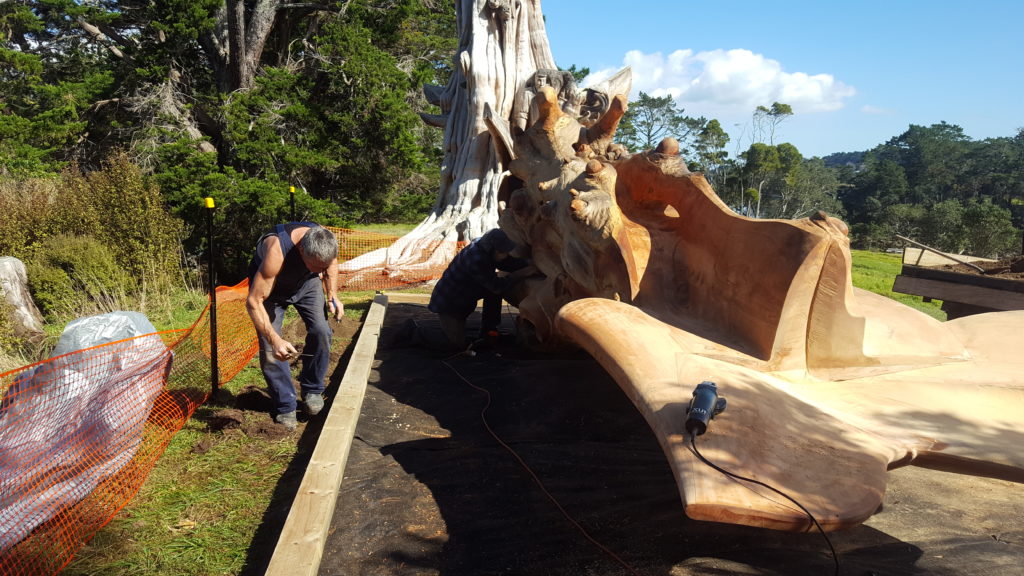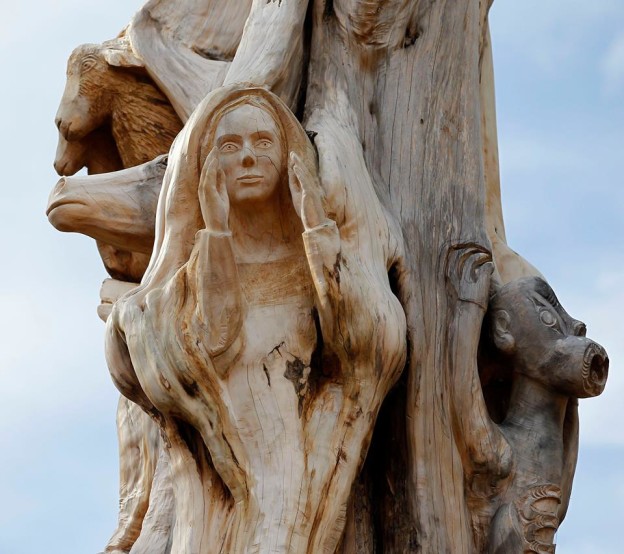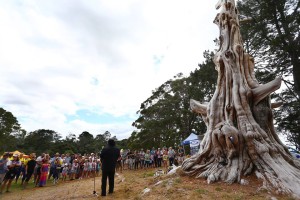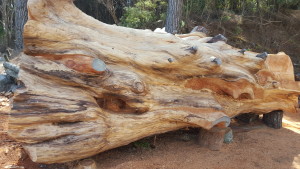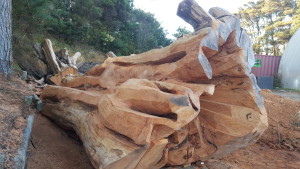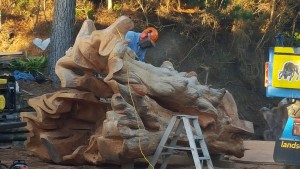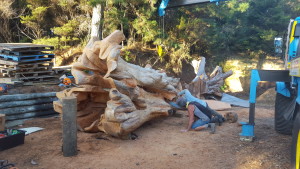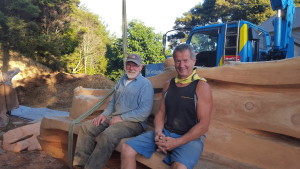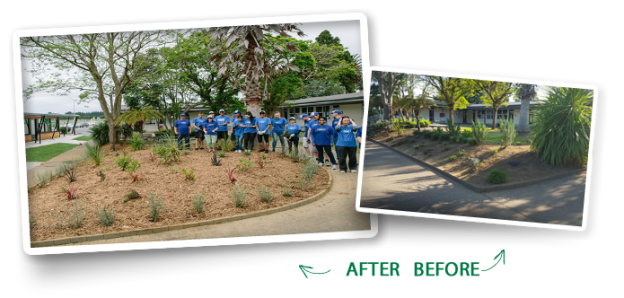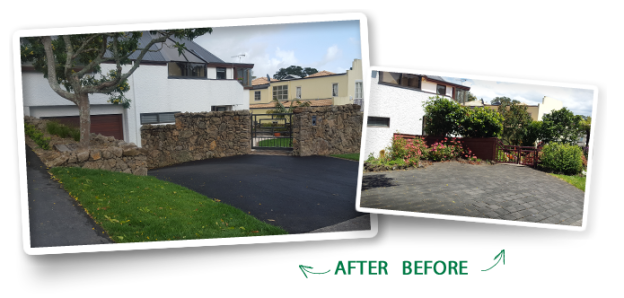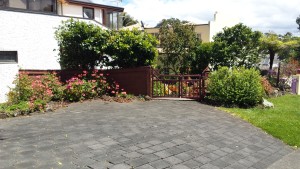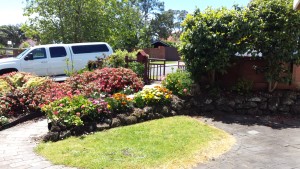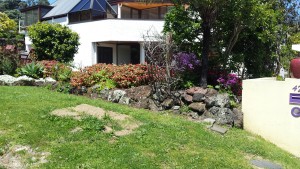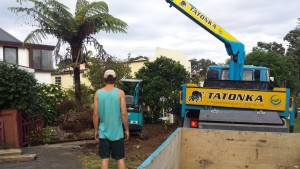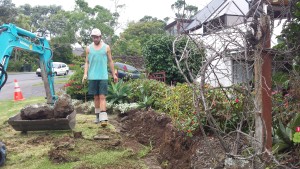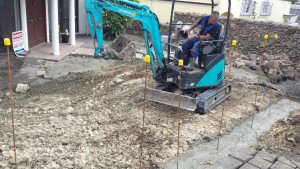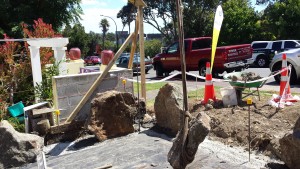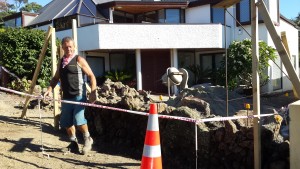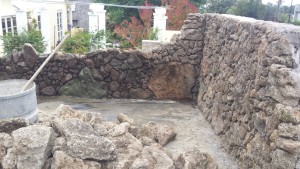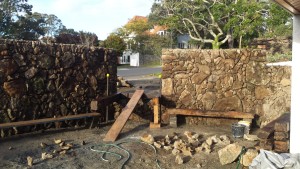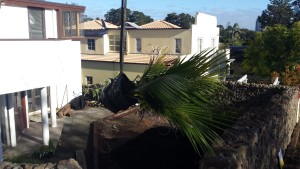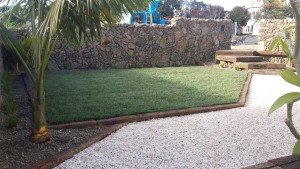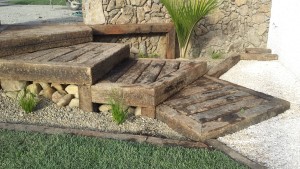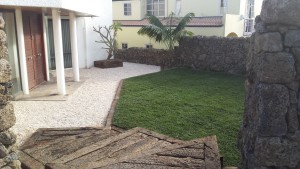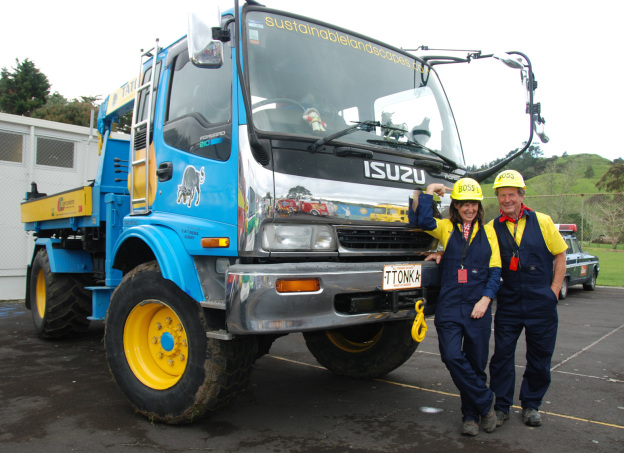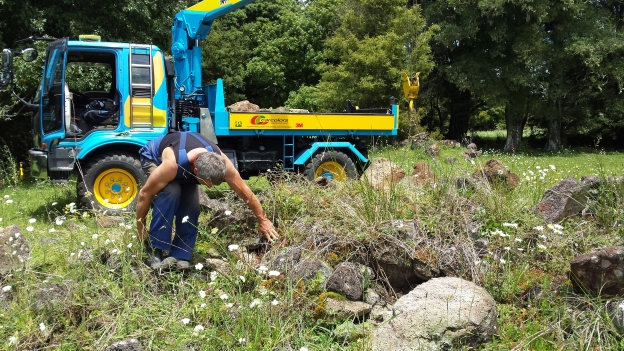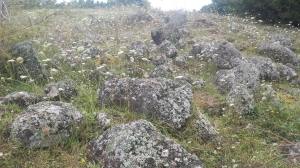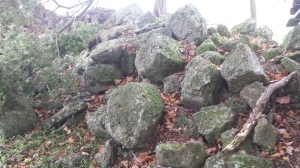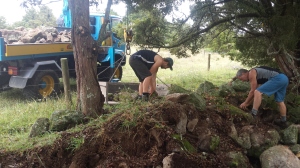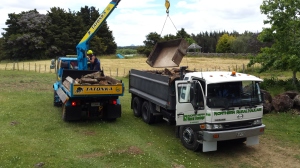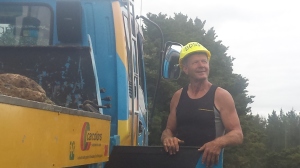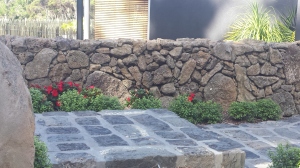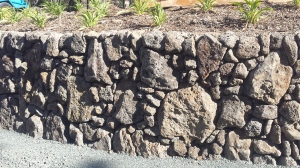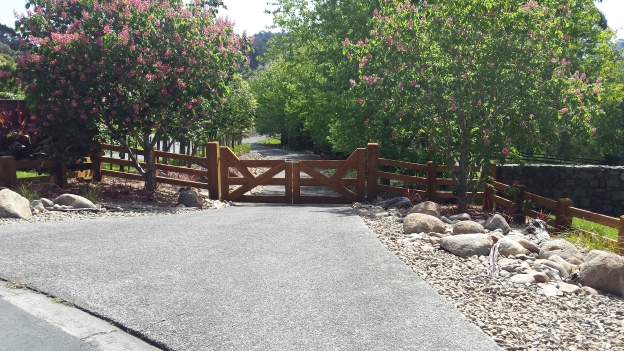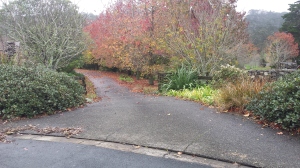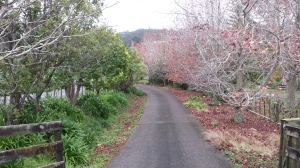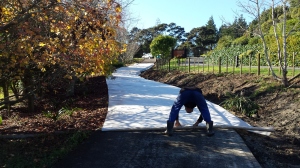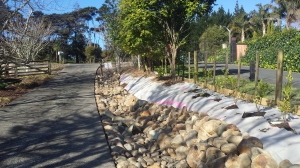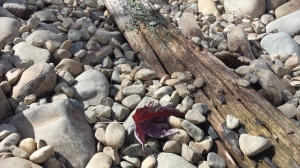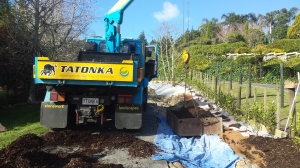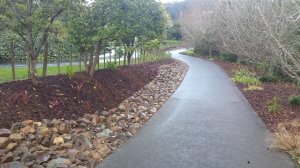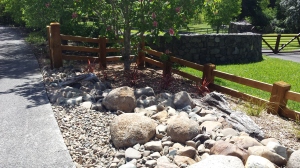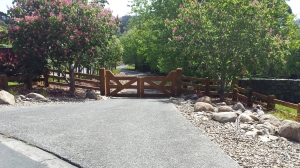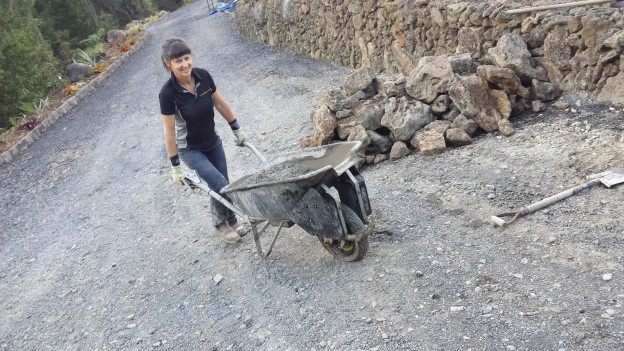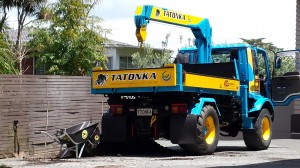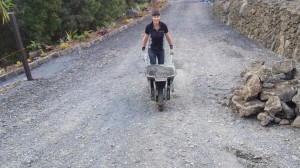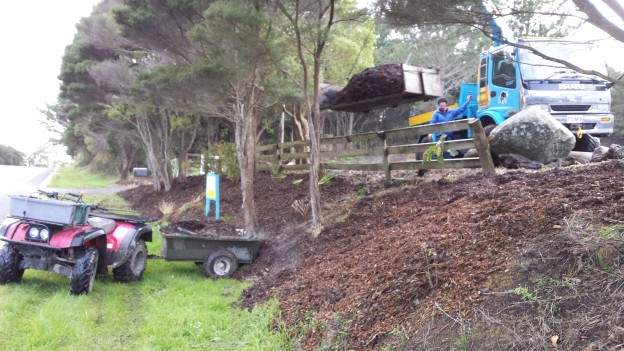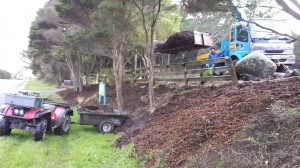How do you deal with a driveway and entrance way that has been overtaken by ivy? The owners wanted a tidy, formal and low maintenance country drive way leading to their rural property on the outskirts of Albany.
The first stage was to clear everything out before we could even begin to visualise what might be. The owners were wanting a stone retainer wall and plantings along the length of the driveway. Low maintenance was a definite requirement.
This was very much a project that evolved as we went. It was impossible to plan this from the outset as we had no idea of what we would discover under the matted ivy.
Making a start – clearing out the ivy
The clearing involved removing the boundary fence and old retaining wall which was falling away. At first we were unaware that it was in such a state as the ivy had covered everything and was making great advancements into the neighbour’s property.
We cleared the foliage with chainsaws, then cleared the roots out with the digger. It was important to get rid of as much of the ivy as possible.
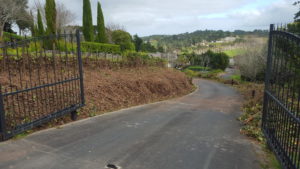
The ivy was cleared by chainsaw.
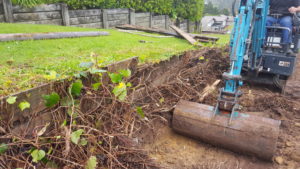
The ivy growing very well in the retainer wall!
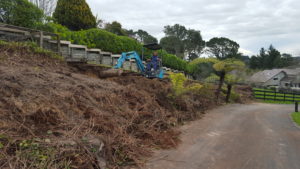
The digger at work.
Building a new retainer wall and fence
Once the area was cleared, it became apparent that the existing retainer fence would need to be replaced. The ivy was clearly well entrenched within it. A new retainer wall and fence, (all in one) was erected. The fence was stained black in keeping with the fence at the front entrance.
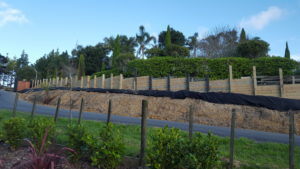
A new retainer wall and fence.
Building the stone retainer wall
Black matting was laid over the cleared areas and large paddock rocks were brought in and placed using the Tatonka crane truck. The placement of the rocks was very important so that they were very stable and looked natural. The stone was dry stacked around the larger rocks creating a natural stone retainer wall.
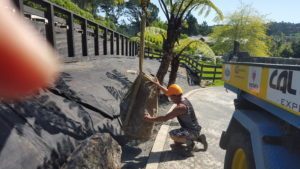
Laying the rocks into place.
Coir matting was used to help create a stable base for the mulch due to the slope. The mulch was placed behind the rocks using the crane truck and bin. This method saves hours of work. The well rotted mulch when applied thickly provides an excellent base for planting.
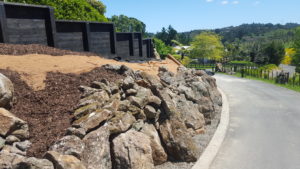
Coir matting placed under the mulch.
With rocks and mulch in place, the owners chose to complete the project with their own planting.
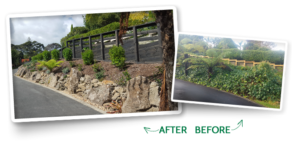
Low maintenance country drive before and after photos
